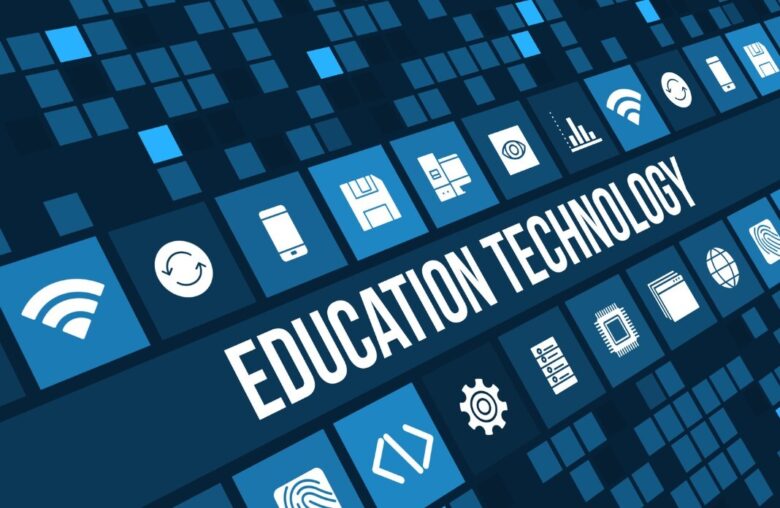Education is no different; technology has transformed nearly every aspect of modern life. Over the past decade, emerging technologies have transformed the way we teach and learn, creating new opportunities and closing gaps that previously seemed unbridgeable. From personalized learning experiences to online platforms and virtual classrooms, these developments have combined to make education more accessible, flexible, and fun than ever before. But how does this change impact the educational environment for students, teachers, and institutions? This article explores how new technologies are changing education and what impact they have on the future.
Personalized Education
The rise of personalized learning is one of the most significant impacts of new technology on education. Today, artificial intelligence (AI) and machine learning are being used to design customized learning experiences for each student. These platforms identify students’ talents, weaknesses, and preferences and then recommend specific courses, exercises, and even a pace that suits them. For example, AI-powered applications could provide extra reading assignments for people with dyslexia or adjust math problems to a student’s level of knowledge. This data-driven strategy ensures that no student is left behind; those who perform well can progress faster than would be possible in a traditional classroom setting. Personalized learning not only improves educational efficiency but also allows students to develop autonomously, increasing motivation and engagement.
Augmented and Virtual Reality
In education, emerging technologies are also bringing immersive experiences to the forefront through virtual reality (VR) and augmented reality (AR). These tools provide hands-on experience and bridge the gap between theory and practice, redefining the way students acquire information. For example, history students can explore ancient sites without leaving the classroom with AR overlays, while future medical students can perform virtual surgeries with VR simulations. VR and AR can not only enhance knowledge but also bring education to life in an engaging way, breaking down boundaries drawn by geography or resources. Virtual laboratory simulations can be a tremendous help for rural schools that cannot afford expensive laboratory equipment. This dynamic approach to education allows students to engage deeply with the subject matter and gain practical knowledge, making learning a fun and memorable experience.
Web-based Learning Tools
Online learning platforms have revolutionized education, making it accessible to people from all walks of life. Websites like Coursera, Khan Academy, and Udemy are alternatives to traditional education, offering low-cost courses in subjects ranging from creative writing to coding. Unlike traditional classrooms, these platforms allow students to learn at their owntheir access content from the world’s best teachers. Online learning tools are also crucial in ensuring that education continues during global crises like the COVID-19 pandemic. Their useful features include quizzes, discussion forums, and video lectures that provide a complete learning experience. Online platforms have democratized education, giving students from underprivileged or developing countries access to opportunities that they might not have otherwise had.
Inclusivity and Accessibility
Accessibility and inclusion are two other key areas where new technologies are transforming education. Assistive technology provides learning tools for students with disabilities and overcomes barriers that have previously prevented them from receiving education. Tools such as screen readers for students with low vision, speech-to-text software for people with limited mobility, and multilingual translation services can help close important gaps in inclusion. On the other hand, cloud-based collaboration solutions allow students from all socioeconomic backgrounds and geographic locations to participate in group projects or discussions. If education is to truly benefit everyone, inclusivity must be at the heart of technological development.
The Role of Teachers
Even with the tremendous advances in technology, the role of teachers remains essential. Technology does not replace it, but teachers use it to improve their teaching strategies and deliver more effective lessons. Digital whiteboards and AI-based assessment systems allow teachers to focus more on their primary roles as mentors and tutors, rather than on administrative tasks. Technology allows teachers to closely monitor student performance, provide prompt feedback, and create an atmosphere of collaboration and creativity. However, to use these technologies properly, adequate training and continuous professional development are needed. Teachers must change with the same enthusiasm so that students are also enthusiastic about new technologies.
Challenges and Thoughts
While the benefits of technology in education are clear, the large-scale adoption of new technologies also comes with challenges. The digital divide is a major problem, as access to advanced technology often reflects socio-economic circumstances. Communities in remote or impoverished areas may not have the infrastructure needed to learn to use technology and gadgets or rely on internet connectivity. The development of technology also brings with it privacy concerns, as many technologies track and process student data. Finding a middle ground between using data to enhance learning and protecting personal information has always been a difficult problem. Schools and governments must also consider the costs associated with adopting new technologies; they must ensure that they invest in inclusive, sustainable solutions.
Future Trends
Looking ahead, it is clear that technology will continue to change the educational landscape in extraordinary ways. Emerging ideas such as AI-based education systems, blockchain references, and gamification look set to make education more engaging and transparent. Blockchain technology can generate academic data that is resistant to manipulation, while AI teachers can provide individualized support to students who are struggling with specific concepts. Gamification, on the other hand, adds excitement and challenge to education. It transforms a boring lesson into a game that improves retention and engagement. Meanwhile, improved 5G connectivity can make distance learning easier by removing obstacles such as latency and inconsistent audio or video feeds. The combination of these future technologies promises a more connected, creative, and inclusive global education system.
Maximizing Education Through Technology
Adopting new technologies in education systems is an important step toward achieving equity, efficiency, and universal student engagement. From creating customized experiences to removing barriers through virtual reality, online platforms, and assistive technologies, technology is undoubtedly transforming education for the better. However, such changes require a well-thought-out strategy; educators, schools, and legislators must work together to address issues such as data protection and accessibility. We can capitalize on current developments and prepare for future trends to ensure that education remains a powerful tool for individual and societal development.
FAQs
1. How can technology improve access to education?
Technologies such as online learning systems, speech-to-text translation, and screen readers can ensure that students with disabilities or those living in remote areas have equal access to education.
2. Will AI one day replace teachers?
No, teachers are herenot going awaystead, AI will become a tool that teachers can use to deliver better, more personalized lessons.
3. What are the biggest barriers to using technology in education?
Thgreatestst obstacles are the digital divide, inadequate teacher training, and concerns about data protection and funding for advanced technology.
4. How can AR and VR enhance learning?
VR and AR allow students to explore difficult ideas, travel to virtual locations, or hone skills in simulated environments by providing hands-on learning opportunities.
5. How effective is online education compared to traditional classroom education?
Online education can be just as effective if it is well-designed and offers flexibility, various materials, and a customized experience.




